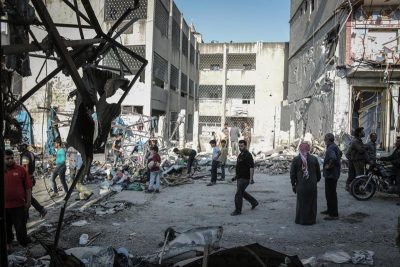Video: Dozens Militants Killed in Airstrikes on Greater Idlib

Six improvised-explosive devices (IEDs) exploded on a part of the Kirkuk–Ceyhan oil pipeline passing near Iraq’s Mosul on July 3. The IEDs attack caused a major fire on the 970km long pipeline with a capacity of 1,600 thousand barrels per day. According to the Iraqi side, the fire was contained after a short period of time.
This was a second attack on oil sector-related facilities in Iraqi within a month. In June, a rocket struck the Burjesia residential and operations headquarters west of Basra, which is home to a number of international oil giants, including US firm ExxonMobil, Royal Dutch Shell PLC, and Italian Eni SpA. Then, mainstream media rushed to blame “Iranian proxies”, but no evidence to confirm these claims were provided.
At least 50 members of Hayat Tahrir al-Sham, the National Front for Liberation and the Turkistan Islamic Party were eliminated by Syrian and Russian airstrikes on Khan Shaykhun, Hobit, Madaya and other targets in Greater Idlib, according to pro-government sources.
At the same time, units affiliated with the al-Qaeda-affilated “Wa Harid al-Muminin” operations room raided positions of the Syrian Arab Army (SAA) in al-Masharie in northern Hama. According to militants 7 SAA soldiers were killed. Additionally, 2 children were killed by militant shelling on the settlements of Aziziyah and al-Rasif.
Late on July 3, a booby-trapped motorcycle exploded in the city center of al-Suwyada. The governorate’s health director told the SANA that three civilians were killed and seven others were injured as a result of the terrorist attack.
No group has claimed responsibility for the attack, yet. However, ISIS remains the main suspect. The terrorist group’s cells are reportedly highly active in the Damascus desert, north of al-Suwyada. Comprehensive operations in these desert are not effective as long as militants always have an opportunity to hide from the SAA in the US-controlled area of al-Tanf. In turn, the US-led coalition demonstrated that, while it is not seeking to combat ISIS presence, it’s ready to attack any government units entering the area.
*
Note to readers: please click the share buttons above or below. Forward this article to your email lists. Crosspost on your blog site, internet forums. etc.
We call upon Global Research readers to support South Front in its endeavors.
If you’re able, and if you like our content and approach, please support the project. Our work wouldn’t be possible without your help: PayPal: [email protected] or via: http://southfront.org/donate/ or via: https://www.patreon.com/southfront

